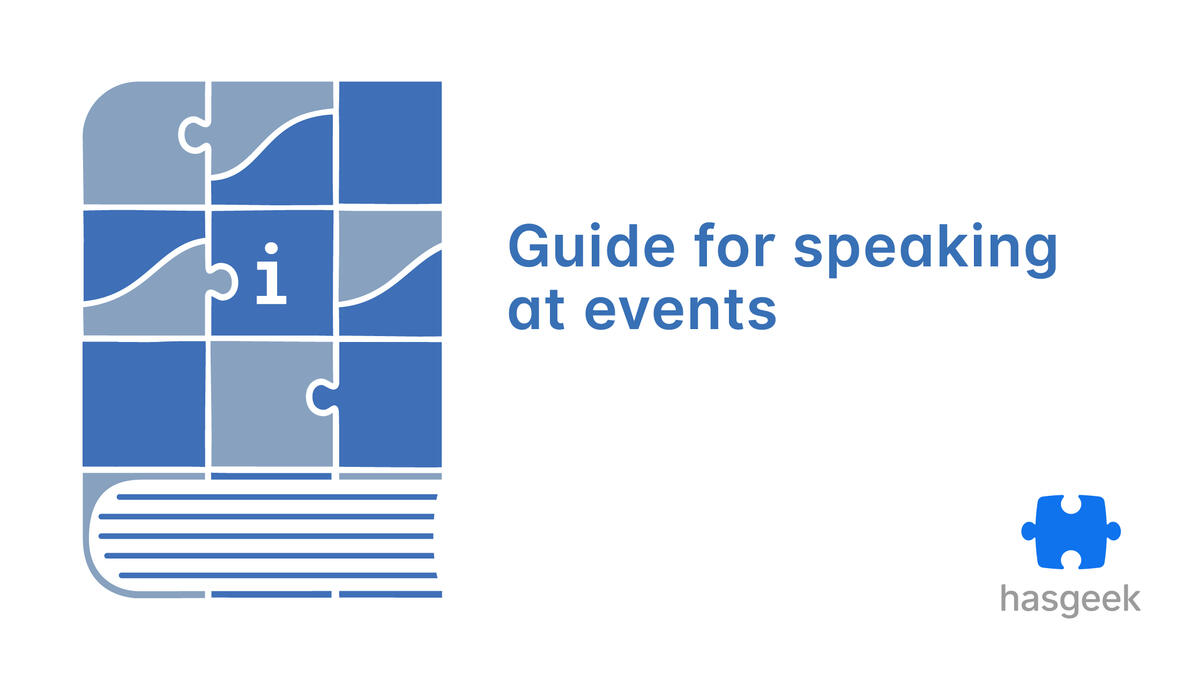- No hiring or product pitches. The talk should share knowledge, not advertise your company or your product. If you want to make a product or hiring pitch, opt for a sponsored session or a kiosk at the meet-up/conference.
- Disclosure: If the work was done outside your current organization, mention it clearly at the start of the presentation.
Example: “This project was developed independently, outside my work at my organization.”
- Company logos are acceptable. You can include your employer or project logo on slides.
- Adhere to the Code of Conduct.
- Language: Be professional and respectful.
- Imagery: Use inclusive and appropriate visuals. Avoid stereotypes or offensive humor.
-
Present from your own laptop. No spare laptops will be provided.
-
Sign the Video Release form. All talks are recorded and live-streamed. The hall manager will ask you to sign a video release form at the venue.
-
Bring an HDMI adapter or cable (especially if not using a Mac).
-
Clickers will not be provided - bring your own if needed.
-
Pre-checks:
- Be at the venue 30 mins before your presentation to test your laptop and slides with the venue’s AV set-up.
- Keep your laptop charged and notifications turned off.
- Absolutely no live demos or live coding during the meet-up or conference. If your demo fails, you’ll end up debugging your code instead of presenting. This distracts the flow of your presentation and leads to a poor quality talk.
- Always prepare a recorded version of your demo on your laptop.
- Keep a local copy of your demos, videos, and slides. Do not depend on venue WiFi or internet-based demos.
- Save files on your laptop or a USB drive so your talk runs seamlessly offline.
- Briefly introduce yourself at the start of the presentation, in not more than 30 seconds.
- Avoid using words like “so”, “basically”, “you know”. This impacts the recording of your talk, leading to more edits of these phrases.
- Explain the agenda of the talk. Or start with an anecdote/story, and then introduce the agenda/flow of the talk.
- Jump into the problem statement quickly so that your audiences are attentive. If you take too much time to get to the problem statement, viewers will lose attention.
- Show architecture diagrams and code samples to make your case during your talk. Visuals help to keep the audience’s attention.
- When concluding your talk, repeat the key insights or main points of your talk.
- Have a concluding slide with your contact details. Tell audiences how they can contact you.
- Add references and links for audiences to look up after the talk.
- Where you have referred to someone else’s work, attribute by adding a citation or a mention in the references.
Review The Fifth Elephant editor Sandeep Joshi’s Dev to Dev presentation for guidance on how to prepare your slides - https://images.hasgeek.com/embed/file/29d3f93818c74c9885eb223986516c5e

{{ gettext('Login to leave a comment') }}
{{ gettext('Post a comment…') }}{{ errorMsg }}
{{ gettext('No comments posted yet') }}